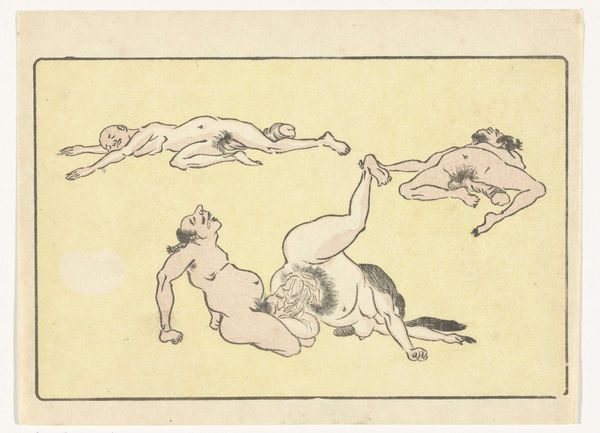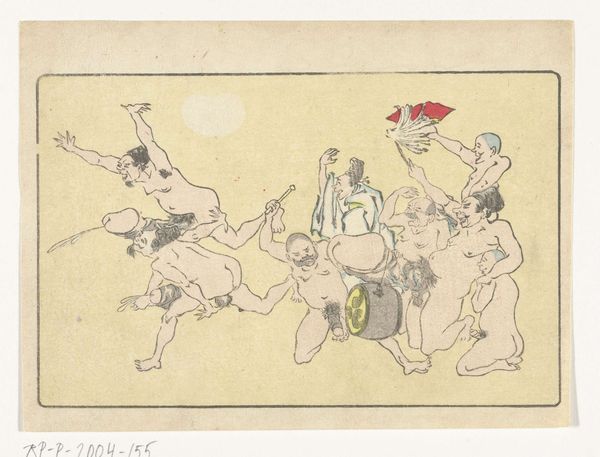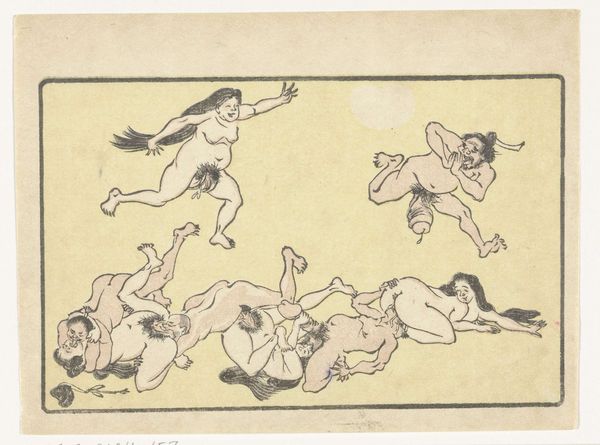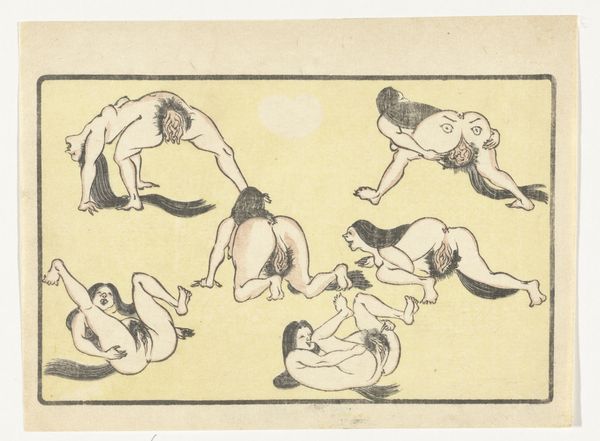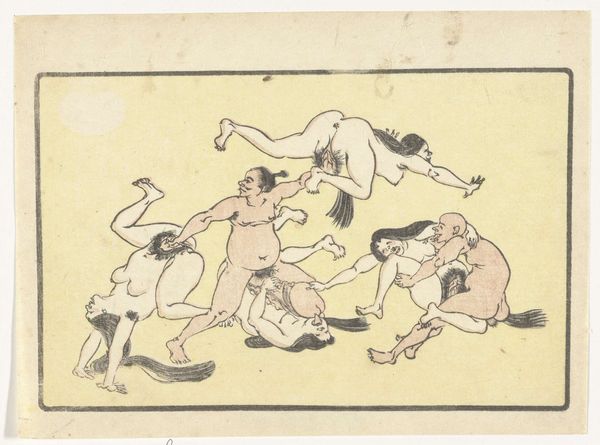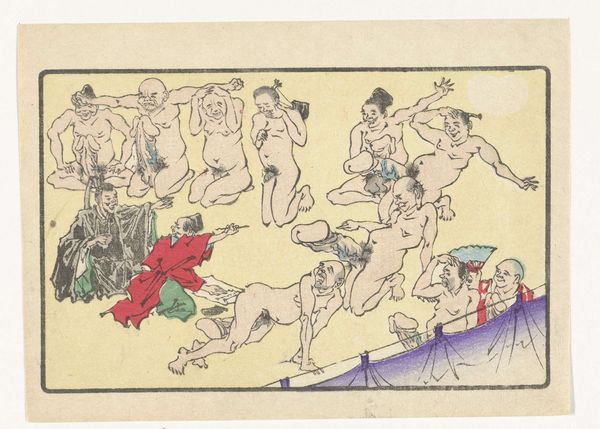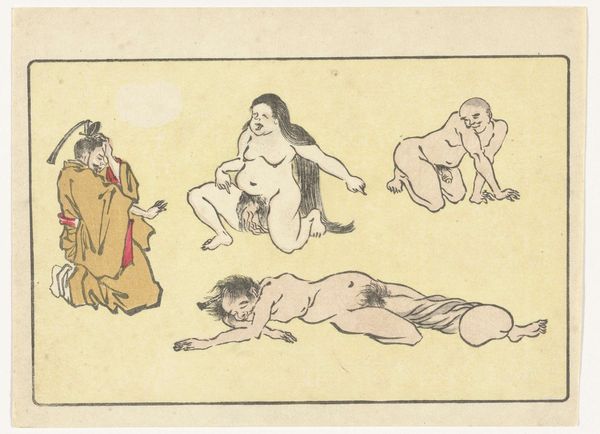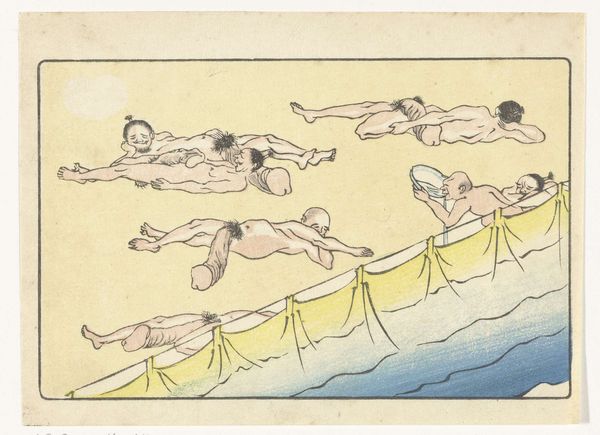
Dimensions: height 129 mm, width 176 mm
Copyright: Rijks Museum: Open Domain
Curator: Good morning. I'm standing before a work titled "Hoveling en naakte personen," which roughly translates to Courtiers and Nude Figures. It was created by Kawanabe Kyōsai around 1870 to 1880 and is now housed in the Rijksmuseum collection. It is made using pen and ink on paper. Editor: Immediately striking, isn't it? Chaotic. Almost frantically playful in its rendering of the figures. There’s a tension between the exposed bodies and the rigid forms, creating a very unique narrative structure. Curator: Absolutely. Kyōsai was a master of Ukiyo-e, though this piece shows his departure from the traditional form. Look closely at the line work. It is less about smooth contours and more about dynamic energy. This emphasizes the themes of satire and the grotesque, common in his later work. Editor: The visible pen strokes showcase Kyōsai's process directly. We are made keenly aware of the labor invested. Notice how the materiality almost mocks courtly art by employing simple materials, yet satirizes social structure by portraying physical comedy that’s visually quite debasing, perhaps critiquing hierarchical systems of class and power. Curator: The figures themselves—those distorted, exaggerated expressions—are fascinating. The use of caricature elevates this from a mere depiction of nudity into a pointed commentary, perhaps on the foibles of human nature or specific societal anxieties of the time. The scale, too, focuses our eye toward intimate human forms that contrast to the formality usually espoused at court. Editor: Considering this work emerged during a period of intense Westernization in Japan, I wonder if the medium of drawing reflects the influence of rapidly evolving aesthetics and availability of various material goods influencing modes of production? The choice of inexpensive paper and easily obtainable ink emphasizes the artist’s decision of working both in and against social confines. Curator: It’s definitely worth pondering what these playful contortions might signify within that socio-political context. I'm drawn back to how these figures relate to this background setting and negative space as a structural choice within the overall compositional layout. Editor: Looking closely at the production, and labor of Kyōsai offers one interpretation. Curator: Indeed. Each viewer will bring their own lens to decipher the dance depicted in "Hoveling en naakte personen." Editor: An artistic work leaving much to our imagination through its visual construction.
Comments
No comments
Be the first to comment and join the conversation on the ultimate creative platform.


